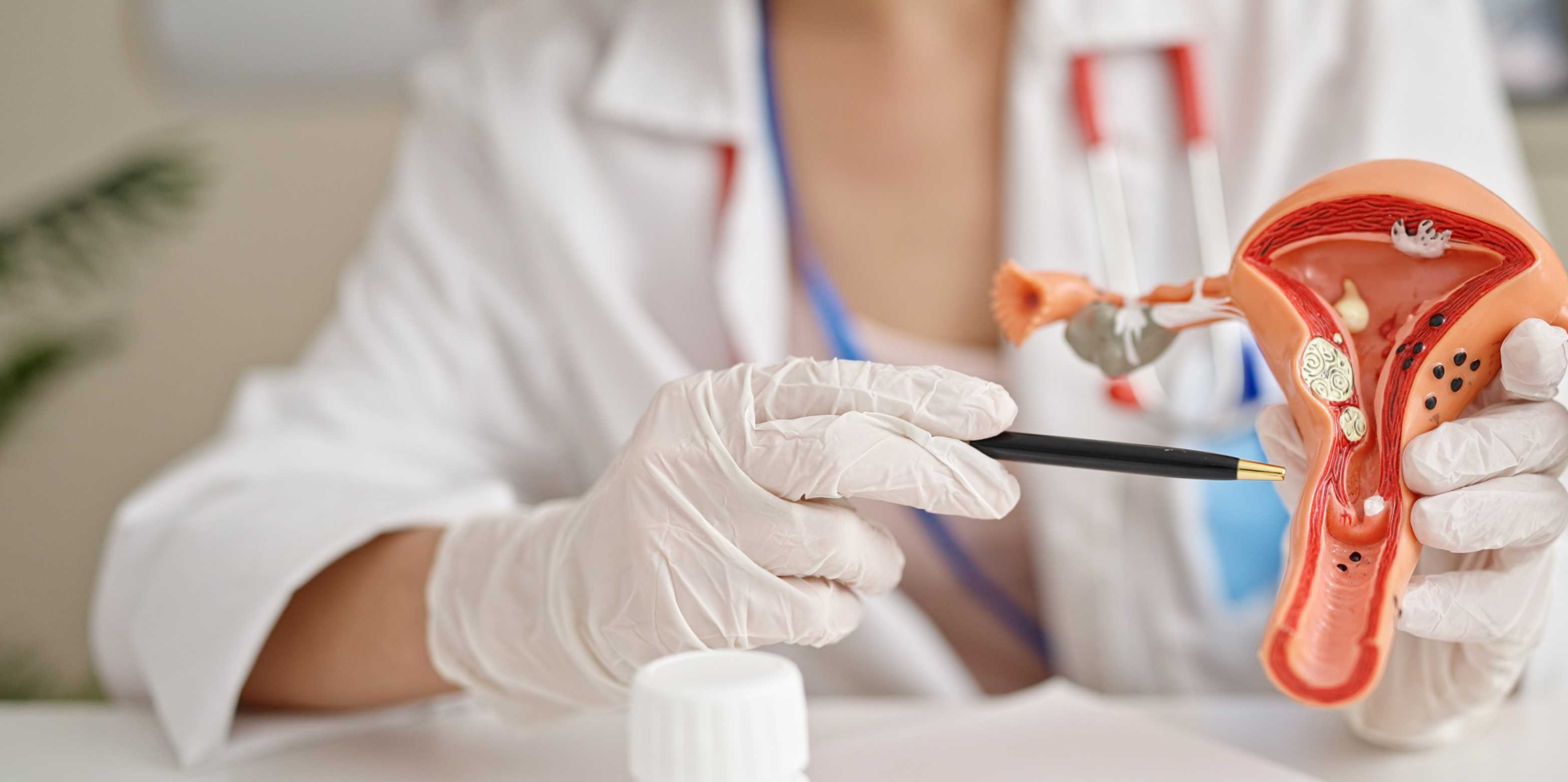Researchers from ETH Zurich and Empa have developed a hydrogel implant that can help prevent endometriosis, a condition that affects a great many women. This innovation also acts as a contraceptive.

In brief
- Hydrogels are plastic gels that can bind water. They are used to deliver doses of medication, as an ingredient in moisturisers and as gelling and thickening agents.
- Researchers at ETH Zurich and Empa have developed a hydrogel implant that occludes the fallopian tubes. This stops the backflow of menstrual blood and can lower the risk of the recipient developing endometriosis.
- Experiments have shown that the implant is not treated as a foreign body by the host, is easy to use and can if necessary be destroyed using UV light or a special solution.
Hydrogels have a variety of use cases, including contact lenses, delivering doses of medication within the body, moisturisers, water storage in soil, cleaning polluted water and as gelling and thickening agents. A hydrogel is a gel made of a type of plastic that can bind water. Researchers at ETH Zurich and Empa have now developed the first hydrogel implant designed for use in fallopian tubes. This innovation performs two functions: one is to act as a contraceptive, the other is to prevent the recipient from developing endometriosis in the first place or to halt the spread if they do.
Around four years ago, Inge Herrmann made a new addition to her research group at the Department of Mechanical and Process Engineering at ETH and Empa. The new member was a senior physician specialising in gynaecology who was keen to pursue clinically-inspired research. This kind of interdisciplinary collaboration was an experiment for the whole team. Their initial goal had been to turn a hydrogel into a new kind of contraceptive for women. However, after the research team began talking to the gynaecologist, they realised that implanting a hydrogel to occlude the fallopian tubes could also help prevent endometriosis.
Preventing endometriosis by occluding the fallopian tubes
Around 10 percent of women suffer from endometriosis. However, it is still unclear exactly what causes this condition. The assumption is that during menstruation, blood flows back along the fallopian tubes and into the abdominal cavity. This blood contains cells from the uterine lining (endometrium), which settle in the abdominal cavity and as a result can cause inflammation, pain and the formation of scar tissue.
The researchers found a way to create a hydrogel implant capable of successfully occluding the fallopian tubes and thus preventing retrograde menstruation. They describe their findings in a external page study that was recently published in the journal Advanced Materials. “We discovered that the implant had to be made of an extremely soft gel – similar in consistency to a jelly baby – that does not impact native tissue and is not treated and rejected as a foreign body,” explains Alexandre Anthis, lead author of the study.
An advantage of hydrogels is that they swell when brought into contact with liquid. As a result, this new implant starts off at approximately two millimetres in length. But once implanted in the fallopian tubes as part of a non-surgical procedure using a hysteroscope – an instrument for inspecting the uterine cavity – the implant swells to more than double its original size. The hydrogel then acts as a barrier to both sperm and blood. “Our hydrogel implant can be easily and quickly destroyed, either with UV light or a special solution, so that recipients don’t have to have an invasive and risky operation should they decide to reverse the procedure,” Herrmann says.
Innovation through interdisciplinary collaboration
Anthis says that one of the biggest challenges was achieving the right balance between stability and degradability. “We wanted to ensure that the implant was compatible as well as stable.” To this end, the researchers first conducted ex-vivo experiments on human (and animal) fallopian tubes that had for instance been removed in the course of treating ovarian cancer. Next, they tested their innovation in a live pig; after three weeks, the hydrogel implant was still in position and there was no sign of any foreign-body reactions.
Together with ETH and the Swiss Federal Laboratories for Materials Science and Technology (Empa), the researchers submitted a patent. But there’s still a way to go before the implant will be ready to market. The team will be looking for collaborators in industry and academia to bring the technology to those that need it the most. Since endometriosis is a human disease, it is challenging to tell how the hydrogel implant will behave long-term once in position in fallopian tubes, especially when recipients engage in strenuous physical activities like sport. Moreover, it is as yet unclear whether blocking the fallopian tubes alone is enough to prevent endometriosis. “We’ve trawled through databases to find data relating to endometriosis patients who have had their fallopian tubes removed,” Herrmann says. Such cases could reveal whether that measure actually stops endometriosis from developing in the abdominal cavity, she adds.
“So far, very little research has been done at the point where materials science, process engineering and gynaecology meet. But this is a vitally important area of research. We hope that our work will count as a meaningful step in the right direction,” says Herrmann, who recently opened the Ingenuity Lab at the University Hospital Balgrist, aiming to translate innovative materials technologies to clinics.
Reference
Anthis AHC, Kilchenmann S, Murdeu M, LeValley PJ, Wolf M, Meyer C, Cipolato O, Tibbitt MW, Rosendorf J, Liska V, Rduch T, Herrmann IK: Reversible mechanical contraception and endometriosis treatment using stimuli-responsive hydrogels. Advanced Materials, 9 April 2024, doi: external page 10.1002/adma.202310301

Comments
No comments yet